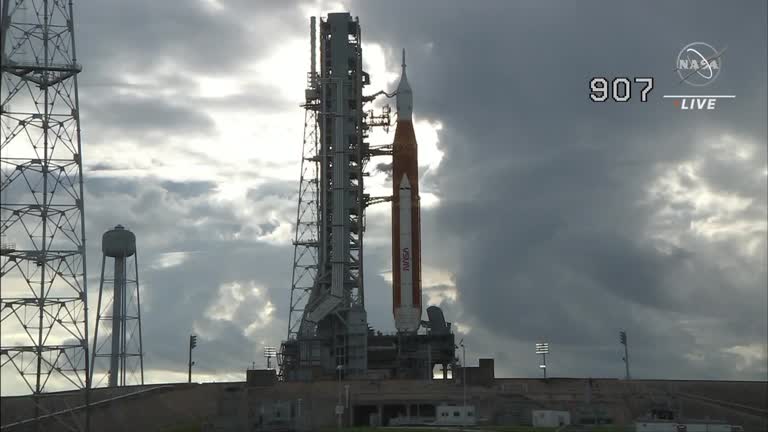NASA on Monday, Aug. 29, postponed for at least four days the launch of its colossal next-generation rocket ship on a long-awaited debut test flight, a planned six-week uncrewed voyage around the moon and back 50 years after Apollo’s last lunar mission.
The countdown clock was halted about 40 minutes before the targeted launch time of 8:33 a.m. EDT (1233 GMT), as the 32-story-tall, two-stage Space Launch System (SLS) rocket and its Orion crew capsule awaited liftoff from the Kennedy Space Center in Cape Canaveral, Florida.
The U.S. space agency cited a problem detected on one of the rocket’s main engines, after launch teams had begun filling the rocket’s core fuel tanks with super-cooled liquid oxygen and hydrogen propellants.
NASA did not give a new launch date but said its first available backup launch opportunity was set for Friday, Sept. 2.
NASA had aimed to take a giant leap in its renewed lunar ambitions with the debut launch of the Space Launch System (SLS) and the Orion crew capsule it is designed to carry.
Success
You are now signed up for our newsletter
Success
Check your email to complete sign up
Late on Aug. 28, Launch Director Charlie Blackwell-Thompson said her team will conduct final checks and providing there are “favorable” results, carry out the launch.
The journey was intended to put the SLS vehicle, considered the world’s most complex and powerful rocket ship, through a rigorous stress test of its systems during an actual flight before it is deemed ready to carry astronauts.
The SLS represents the biggest new vertical launch system NASA has built since the Saturn V rockets flown during its Apollo moon program of the 1960s and 1970s.
More than a decade in development with years of delays and billions of dollars in cost overruns, the SLS-Orion spacecraft so far has cost NASA at least $37 billion, including design, construction, testing and ground facilities.
NASA’s Artemis program, named for the goddess who was Apollo’s twin sister in ancient Greek mythology, aims to return astronauts to the moon as early as 2025 and establish a long-term lunar colony as a steppingstone to even-more-ambitious future voyages sending people to Mars.
If successful, Artemis I would pave the way to a first crewed SLS-Orion mission, an out-and-back flight around the moon designated Artemis II, as early as 2024, followed a year or more later by an Artemis III trip to the lunar surface.
By NASA via Reuters. (Production: Maria Alejandra Cardona, Pavithra George, Kia Johnson)
















